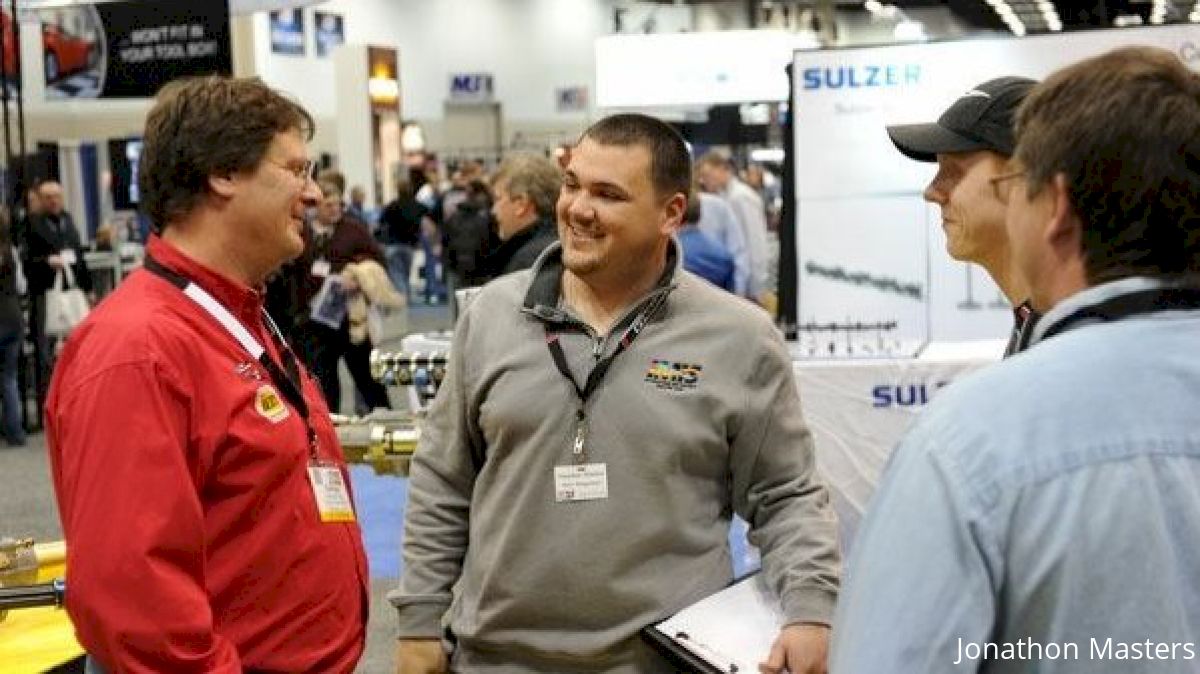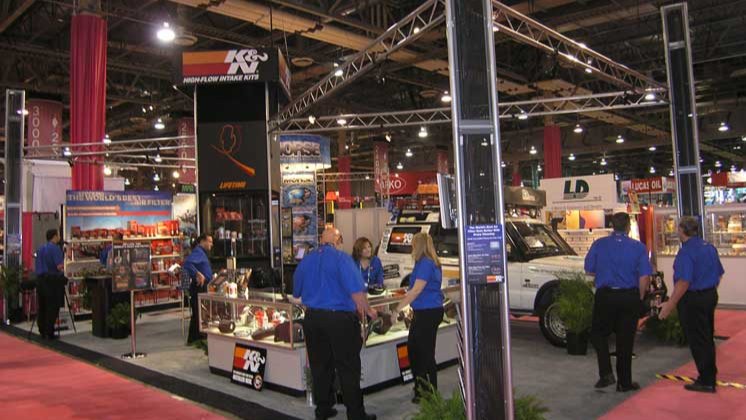The Rise Of The International Motorsports Industry Show: A Study
The Rise Of The International Motorsports Industry Show: A Study
The International Motorsports Industry Show was one the premiere trade shows in its day and much can be learned from its rise and fall.

by Jonathon Masters
Part 1: The Stage is Set
I grew up in the motorsports industry.
My family has been manufacturing dirt late models for more than 30 years in Southern Indiana. A typical weekend for my family involved traveling across the country to attend races, visit customers, and tour parts manufacturing facilities. All of our family friends are members of the motorsports community. I was raised to love motorsports, and I do.
People who grew up in motorsports mark different milestones from people outside of racing. One of the biggest milestones a lot of us looked forward to and will always remember is when you finally reached the age in which you could attend your first Performance Racing Industry Show.
I will never forget the first time I was allowed to join my dad in Indianapolis for the world's biggest racing trade show. MasterSbilt Race Cars had a booth in the now demolished RCA Dome that showcased a specialty built dirt late model with a body that raised like a drag racing funny car.
At the time, PRI was a racing Disneyland for a teenager in the motorsports industry. Every motorsports company you knew had a booth there representing them. Every person you knew was there as well. Every crew member, every sales representative, every driver, and every promoter was always in attendance. It was a great opportunity to talk racing and unwind in the middle of the off-season. Indianapolis was the perfect city to host the event.
Indianapolis is a unique city for racing and trade shows in general. It has a lot of racing history, but it goes a lot deeper than that. It is centrally located for around 80% of the racing community, the city is designed around events and conventions, the bar and restaurant scene is fantastic, and the city goes out of its way to make you feel important.
All seemed fantastic with the PRI Show in Indianapolis until 2004 when the show, feeling the restraint of the convention center's current size, move to Orlando with the promise to return when the new expansions to the Indianapolis convention center were completed.
The city of Orlando proved to be an attractive spot of the show. It was warm there in December. You could bring the wife and kids for a weekend of vacation, it was great for international travel, and with a million square feet the size was never going to be a problem. After a few years it was also obvious that it was a permanent move.
The problem that Orlando had was when you went there you were ready for vacation and not racing business. The cost of going had increased due to the increased travel and many of the racers who use to go to PRI simply stopped going. Sure, there were people that replaced them in terms of warm bodies moving down the hall but they were not the same racers. It was no longer a hardcore racing show, it was a motorsports and aftermarket show.

Indianapolis was hard at work expanding the convention center, building a new 250,000 square foot hall, demolishing the old RCA Dome, and building infrastructure around the city. Indianapolis was ready to welcome the racing industry back to the city, but PRI was not coming. The series of events that were to follow shook the racing world for 4 years.
Tom Weisenbach was the director of the Indiana Motorsports Association. During a visit to MasterSbilt around 2007, he asked us about the trade show scene and we told him that if somebody were to do a competing show in Indianapolis that the hardcore racing world would support it. I imagine that this feedback had been given by multiple others, or maybe we were some of the first to suggest it, either way the seed of the idea had been sown and was taking root because in early 2009 I received an email asking me for help selling booths at a new show happening in Indianapolis in December.
At the time I was working with a group called Racing United Marketing and was focused on varying projects inside the racing industry. I was asked to come into the IMA offices that were attached to C&R Racing in Northern, Indianapolis. We all sat around a makeshift boardroom table in a baby blue painted room. That is where I was introduced to the idea and vision for The International Motorsports Industry Show.
The show was being backed by an ownership group comprised of Weisenbach, C&R owner Chris Paulsen, Tony Stewart, and business man Jeff Stoops who was head of USAC's board. The show would take place in two halls of the Indiana Convention Center and focus on the hardcore racing industry. It wouldn't be run by magazine publishers or trade show people from the West Coast, it would be run by racing people from the Midwest. It was racing people putting on a trade show and not trade show people putting on a racing show.
The first year was unique and laid down the concepts that would work by for the next four years. It was a chance for a new team to meet one another and learn a business we never expected to be a part of. Later this week, we will talk about 2009 and the journey that turned us from a loosely assembled group into the fulltime IMIS team that would last until the end.
- Jonathon Masters has a lifelong connection with dirt racing. His family has owned and operated MasterSbilt Race Cars manufacturing dirt late model chassis for 35 years. He attended college in North Carolina for motor sports management and has written for various industry publications. Jonathon was an account executive at The International Motorsports Industry Show, founder of the Heartland Auto Racing Show, and has been a racing industry professional for over a decade.
Exclusive Content
Weekly Columns by Jonathon Masters
What It Takes To Succeed In Racing, Part 1 Equipment | Part 2, Crew | Part 3, Driver
Steve Casebolt Moves to Jim Beeman Motorsports
Engagement Is One Key To Dirt Racing's Success And NASCAR's Decline